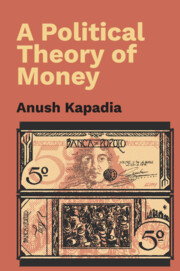7 - Coherence: Why Money Is Not Value
Published online by Cambridge University Press: 14 September 2023
Summary
The entire system is like an archetypical Escher print, where stairs and pillars mutually buttress an elaborate interconnected edifice, but no part of the edifice ever touches the ground.
—Mirowski (1990, p. 717)Production, consumption, and trade, are nothing more than flows of money in and out and between different economic units. The most real thing is money, but money is nothing more than a form of debt, which is to say a commitment to pay money at some time in the future. The whole system is therefore fundamentally circular and self-referential. There is nothing underneath, as it were, holding it up.
—Mehrling (1999, p. 138)Forms of money represent an abstract conception of value which is measured by itself—that is to say, a tautological but efficacious social construct.
—Ingham (2018, p. 844)There have only ever been various monies of differing quality. Our contemporary world is now a world of national monies tied to bank money backstage. Money's variability is part of its ontology. A theory of money has to account for this variation: why do some monies have more value than others? This question points to the material power of money, but not necessarily only through the question of how much of the world of goods and services a particular money can command.
Our theory of money takes the material dimension of money to be irreducible, but it does so via the financial or contractual route rather than the purchasing power or exchange route. This is not to say that the command of wealth is not a key driver of money's ‘substantive value’, to use Weber's term; it obviously is. Yet money remains a liability that promises to pay what is on the asset side of the issuing balance sheet. If credit or debt is part of money's very ontology, then so too is this asset or liability structure that contractually anchors money's value in the material dimension. The nature and extent of this anchoring vary with the form of mutualisation of the issuing balance sheet, economic or political, but both forms point to something external to the credit–debt relationship. There is something holding up money after all.
Nominalists (such as Simmel and Ingham) read money as a tautological social construct—value itself.
- Type
- Chapter
- Information
- A Political Theory of Money , pp. 126 - 150Publisher: Cambridge University PressPrint publication year: 2024



